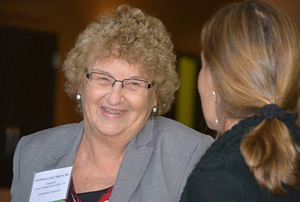
A Feeling For the Organism
One of the great humanitarian physicians, Charles Ray Jones is a medical maverick who bucks the establishment to treat tick-borne disease in the shadows of Yale.
by Pamela Weintraub
On crisp fall mornings and warm spring evenings, tourists to New Haven crowd the intersection of Broadway and Park. There, by the century-old gothic Christ Church, they steep in a brew of academic cool and kitsch.
Students wander the streets clutching cups of Starbucks coffee, stopping to chat on benches or browse for books, designer jewelry and clothes. The Campus Clothing Company sells Yale University tee-shirts, caps, and mugs to gloating parents while students themselves don wardrobes from the Urban Outfitters down the street.
It is only in downtown New Haven that a generic Barnes and Noble could have the chutzpah to call itself “The Yale Bookstore,” or that casual food joints push the envelope with names like the Educated Burgher and the Ivy Noodle.
Walk a few blocks East, and you’ll find the source of all the haute and hype: Yale itself, home to the bright hopes and dreams of the well-heeled or simply brilliant, one of the most beautiful and august universities in the world. Ace your high school years with a 4.0 grade point average and 1600 SATs, and you might get to New Haven, too.
But there is another, less illustrious route to New Haven, one requiring no academic credential save from the school of hard knocks. Just follow Park Street back past Christ Church, alongside the filling stations and laundromats, the dilapidated deli storefronts and the children hanging on stoops.
Only Pediatrician Treating Chronic Lyme in Children
There, in the shadows of the Yale-New Haven Medical Center, in a seen-better-days building more notable for its 70s-style blandness than for ivy along the wall, is the first-floor office of Charles Ray Jones.
 Today, at 73, Jones has, by default, become the sole U.S. pediatrician specializing in the long-term antibiotic treatment of the disease called “chronic Lyme.”
Today, at 73, Jones has, by default, become the sole U.S. pediatrician specializing in the long-term antibiotic treatment of the disease called “chronic Lyme.”
Often that term is a misnomer, Jones states. The chronic Lyme disease spectrum includes not just Borrelia burgdorferi, the bacterial infection known to cause Lyme disease, but a host of other tick-borne germs.
At the top of Jones’ list for these co-infections are human granulocytic ehrlichiosis, a rickettsial illness, Bartonella, a bacterial disease known to gravitate to the brain and central nervous system, and babesiosis, caused by malaria-like protozoa that live in the blood.
“The children and adolescents who get sickest, and who are hardest to treat,” says Jones, “usually have an immune genetic marker associated with arthritis and more severe disease, or one of the co-infections along with Lyme disease.”
“Children Do Get Well”
As far as Jones is concerned, moreover, children and teenagers treated appropriately usually kick the disease altogether – no matter how sick they may be when they walk through his door.
“When it comes to children, at least,” says Jones, “the word chronic usually does not turn out to be correct. Because we find that children, when diagnosed with the correct infections and treated with the appropriate medication, do get well.”
 It is the hopeful attitude and the accolades of grateful parents that keep Jones out of retirement — 10 hours a day, seven days a week.
It is the hopeful attitude and the accolades of grateful parents that keep Jones out of retirement — 10 hours a day, seven days a week.
Not what you’d expect?
Those first visiting the pediatrician may be surprised by the low-key office, hunkered, incongruously, at the end of a long, narrow, dimly lighted hall. The windowless waiting room is Norman Rockwell-friendly, boasting a selection of gentle watercolors and a Little Tikes Country Kitchen as well as countless books.
His suite – including a few exam rooms and an alcove for blood work — also contains a darkened space with couch, blanket, and VCR for kids too cold, light sensitive, or exhausted to wait out front……..Join or login below to continue reading.




























